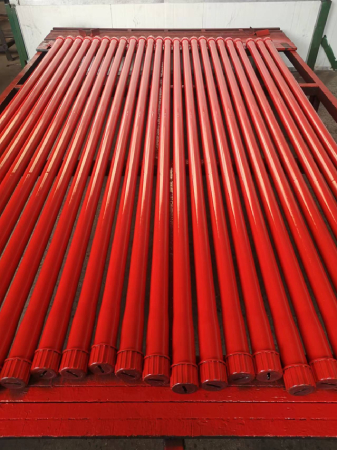- Afrikaans
- Albanian
- Amharic
- Arabic
- Armenian
- Azerbaijani
- Basque
- Belarusian
- Bengali
- Bosnian
- Bulgarian
- Catalan
- Cebuano
- Corsican
- Croatian
- Czech
- Danish
- Dutch
- English
- Esperanto
- Estonian
- Finnish
- French
- Frisian
- Galician
- Georgian
- German
- Greek
- Gujarati
- Haitian Creole
- hausa
- hawaiian
- Hebrew
- Hindi
- Miao
- Hungarian
- Icelandic
- igbo
- Indonesian
- irish
- Italian
- Japanese
- Javanese
- Kannada
- kazakh
- Khmer
- Rwandese
- Korean
- Kurdish
- Kyrgyz
- Lao
- Latin
- Latvian
- Lithuanian
- Luxembourgish
- Macedonian
- Malgashi
- Malay
- Malayalam
- Maltese
- Maori
- Marathi
- Mongolian
- Myanmar
- Nepali
- Norwegian
- Norwegian
- Occitan
- Pashto
- Persian
- Polish
- Portuguese
- Punjabi
- Romanian
- Russian
- Samoan
- Scottish Gaelic
- Serbian
- Sesotho
- Shona
- Sindhi
- Sinhala
- Slovak
- Slovenian
- Somali
- Spanish
- Sundanese
- Swahili
- Swedish
- Tagalog
- Tajik
- Tamil
- Tatar
- Telugu
- Thai
- Turkish
- Turkmen
- Ukrainian
- Urdu
- Uighur
- Uzbek
- Vietnamese
- Welsh
- Bantu
- Yiddish
- Yoruba
- Zulu
Understanding Various Types of Casing and Tubing Connections in Oil and Gas Industry
Casing and Tubing Connections An Overview
Casing and tubing connections are critical components in the petroleum and natural gas industry, serving to ensure the structural integrity of wells and the efficient transport of hydrocarbons from subsurface reservoirs to the surface. Understanding the characteristics, types, and applications of these connections is essential for engineers, field operators, and maintenance personnel involved in drilling operations.
What Are Casing and Tubing?
Casing refers to the pipes that are used to line the borehole once drilling has been completed. It provides structural support to prevent the well from collapsing and isolating different underground formations. Casing also serves to protect groundwater from contamination and ensure that high-pressure hydrocarbons do not leak into other formations or the environment.
On the other hand, tubing is the pipe that carries the hydrocarbons from the reservoir to the surface. It is installed inside the casing and is designed to withstand the internal pressures of the fluids being transported, thereby playing a vital role in the productivity and safety of the well.
Types of Connections
Casing and tubing pipes are connected using various connection types, including threaded, welded, and slip-on connections. Among these, threaded connections are the most prevalent due to their ease of installation and the ability to create a tight seal.
1. Threaded Connections These consist of a male and female thread that can be easily screwed together. The threads are often coated with a sealant to enhance the seal. Various threaded connection types exist, such as API (American Petroleum Institute) connections, which adhere to industry standards and specifications.
2. Welded Connections In environments where threaded connections may be prone to failure, welded connections provide a more permanent solution. These connections are created by welding the edges of the casing or tubing together using specialized equipment. While they offer superior strength and longevity, they are more labor-intensive and time-consuming to install.
casing and tubing connections

3. Slip-on Connections This variety involves sliding the casing or tubing over a fitting and securing it in place, typically with bolts. These connections are simpler to install but may not withstand as much stress as threaded or welded options.
Importance of Quality and Standards
The integrity of casing and tubing connections is paramount. Failures at connection points can lead to serious safety hazards, including blowouts and leaks, which can have devastating environmental impacts. As such, industry standards, like those set by the API and ISO (International Organization for Standardization), play an essential role in governing the materials and practices used in producing these connections.
Quality control during the manufacturing process is equally crucial. Rigorous testing protocols, including x-ray and non-destructive testing methods, ensure that any defects are identified and rectified before the pipes are deployed in the field.
Applications and Innovations
Casing and tubing connections are not limited to oil and gas extraction; they are also utilized in geothermal energy projects, water well drilling, and environmental monitoring wells. As the demand for efficient and reliable energy sources continues to grow, the need for advanced casing and tubing technologies has risen.
Innovations in material science have led to the development of high-strength, lightweight materials that enhance performance and wear resistance. Additionally, advancements in connection designs, like the emergence of premium connections, offer improved sealing capabilities and are better suited for high-pressure/temperature applications.
Conclusion
In conclusion, the importance of casing and tubing connections in the oil and gas industry cannot be overstated. These connections ensure the safe and efficient extraction of hydrocarbons while mitigating environmental risks. As technology continues to evolve, it is imperative for industry professionals to stay informed about the latest developments in connection types, materials, and standards to enhance operational safety and efficiency. By prioritizing innovation and quality in casing and tubing connections, the energy sector can move towards a more sustainable and responsible future.
-
Tubing Pup Joints: Essential Components for Oil and Gas OperationsNewsJul.10,2025
-
Pup Joints: Essential Components for Reliable Drilling OperationsNewsJul.10,2025
-
Pipe Couplings: Connecting Your World EfficientlyNewsJul.10,2025
-
Mastering Oilfield Operations with Quality Tubing and CasingNewsJul.10,2025
-
High-Quality Casing Couplings for Every NeedNewsJul.10,2025
-
Boost Your Drilling Efficiency with Premium Crossover Tools & Seating NipplesNewsJul.10,2025







